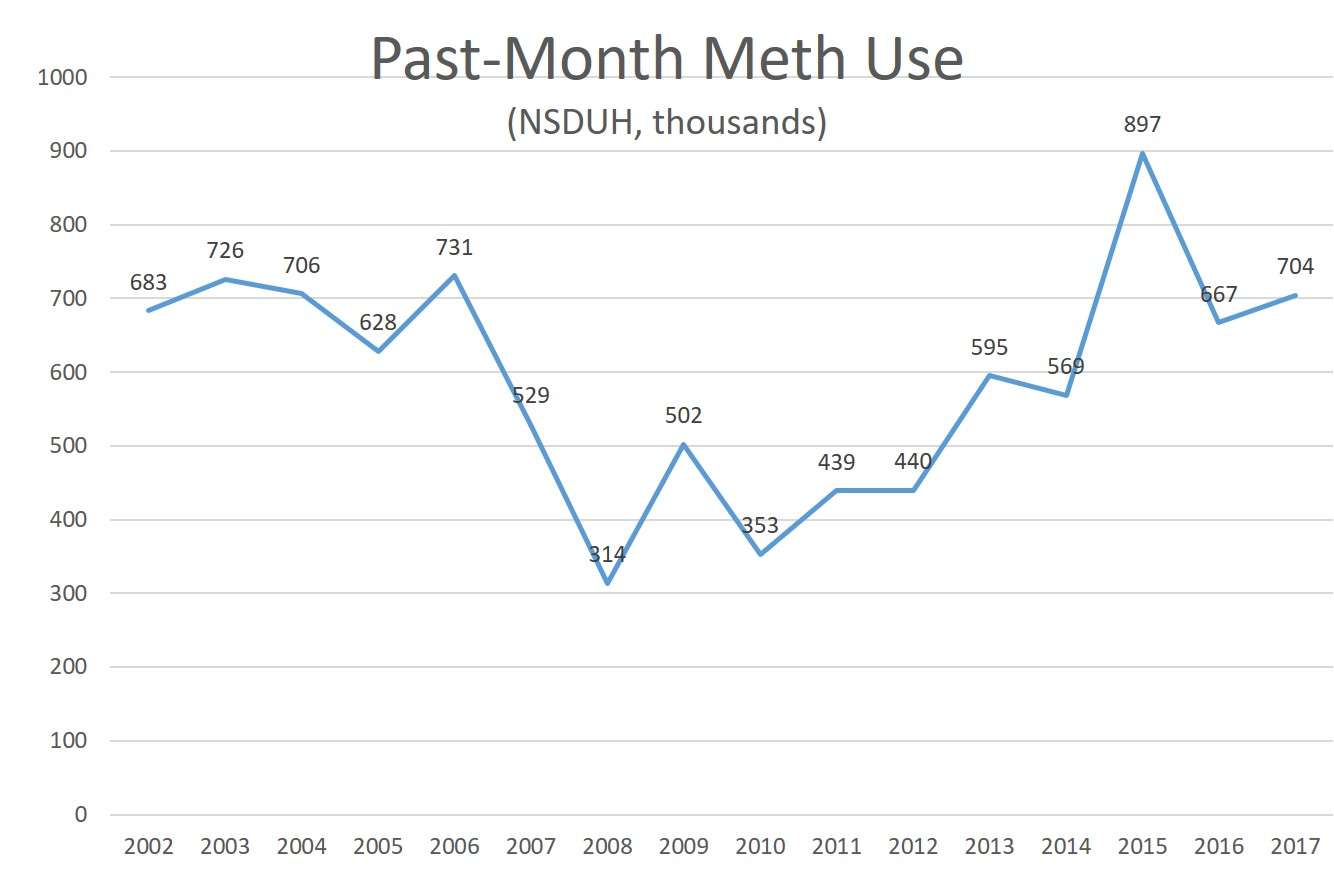DEA Says Meth Use Has Never Been Higher; Survey Data Say Otherwise
The number of past-month users was up last year from 2016, but it was still lower than in several previous years.
Are you tired of reading about the "opioid crisis"? Drug warriors have another epidemic waiting in the wings, just in case opioid-related deaths stop climbing. "The sharp rise in opioid abuse and fatal overdoses has overshadowed another mounting drug problem," NPR reports. "Methamphetamine use is rising across the United States." The story quotes Erik Smith, assistant special agent in charge of the Drug Enforcement Administration's Kansas City office, who claims that "usage of methamphetamine nationally is at an all-time high."
A look at data from the National Survey on Drug Use and Health (NSDUH) suggests that is not true. Past-month use last year was down 22 percent from 2015, for instance. That number also was higher in 2003, 2004, and 2006.

The Substance Abuse and Mental Health Services Administration (SAMHSA), which oversees the survey, warns that the pre-2015 numbers "are not comparable" to the numbers for the last three years, because the questionnaire changed in 2015. Methamphetamine previously was included in the section that asked about unapproved use of prescription stimulants, which was a bit weird because most methamphetamine consumed for nonmedical purposes is made illicitly. In 2015, SAMHSA says, "a new methamphetamine module was added, separate from questions about misuse of prescription stimulants, that asks about use of methamphetamine rather than misuse." But if anything, that change should have boosted reporting of meth use, as suggested by the spike between 2014 and 2015. In other words, if the current questionnaire had been used throughout this period, the pre-2015 numbers would have been higher, not lower.
What about the Monitoring the Future Study, which surveys high school students, college students, and young adults? According to that survey, past-month methamphetamine use peaked in 2000 among high school seniors, in 1999 among college students, and in 2001 among young adults (ages 19 to 28). Last year's rate was down 84 percent from the peak among high school seniors, nearly 100 percent among college students, and 80 percent among young adults.



Show Comments (8)